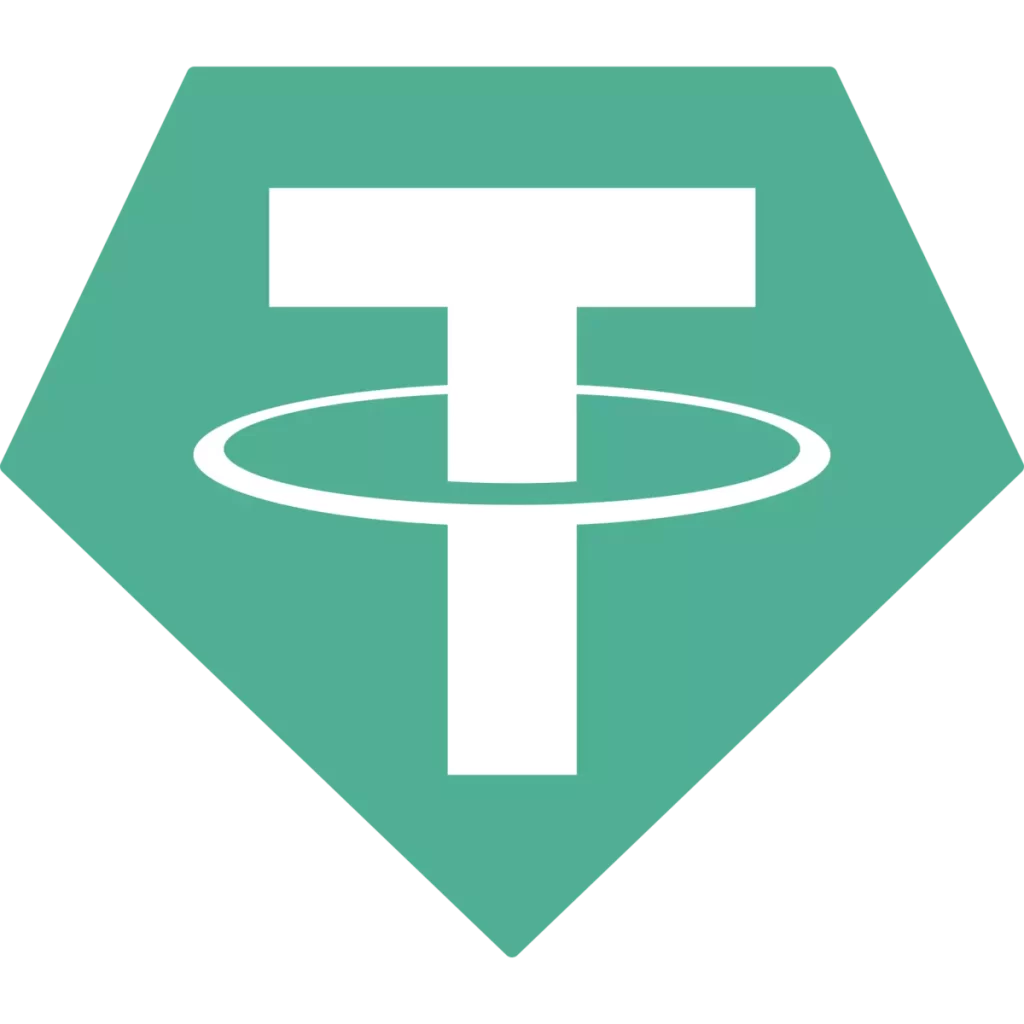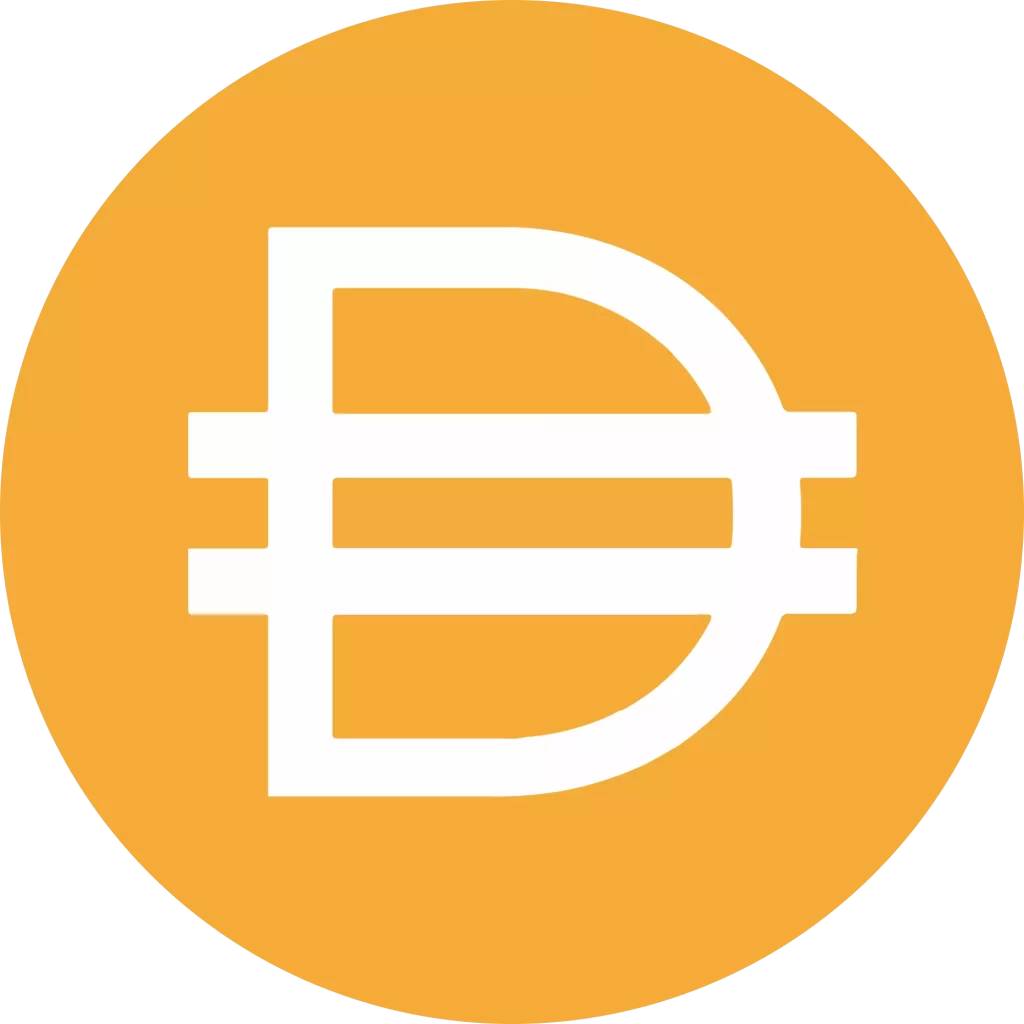Stablecoins are getting popular in the cryptocurrency industry with the strategy to reduce price volatility and offer a stable place to keep the money. They have become a crucial part of the cryptocurrency world as they provide stability and a connection to conventional financial systems. These digital assets are created to ensure that their value remains stable in relation to particular assets or mechanisms. Let’s take a closer look at the top 5 stablecoins in the market, and we’ll also tell you which is the best wallet for stablecoins. Before we proceed, let’s first discuss what they are.
Table of Contents
Understanding Stablecoins
Stablecoins provide a way to close the distinction between conventional currencies like the U.S. dollar and cryptocurrency. Stablecoins are an innovative solution to the problem of crypto volatility since they are digital assets with constant prices that behave in some ways like fiat currency while retaining the mobility and utility of bitcoin. This price stability is incorporated directly into the assets themselves, so it cannot be lost.
Stablecoins are launched to make cryptocurrency with less risk and whose price doesn’t fluctuate much. These are pegged to the US dollar which makes them less volatile. They make it easy to transfer value between different cryptocurrency exchanges because they act as a link between the crypto and fiat worlds. For the sake of cryptocurrency’s safety, it is crucial to get a secure crypto wallet that can save your cryptos from getting stolen.
What are Stablecoins
Stablecoins are a kind of digital currency that aim to reduce fluctuations in value by keeping a steady price in relation to a particular digital asset or group of assets. Stablecoins are not the same as cryptocurrencies such as Bitcoin or Ethereum because they strive to maintain a consistent and predictable value, much like regular currencies. This means that stablecoins are less likely to change their prices significantly.
As compared to other cryptocurrencies, stablecoins have several advantages. Their platform allows users to store value and make transactions without worrying about the unpredictable asset fluctuations that are common with traditional cryptocurrencies.

It’s worth mentioning that even though stablecoins maintain a stable value, they still carry some level of risk. It’s important to research how well the stability mechanisms work and whether the organizations supporting them can be trusted. Furthermore, it’s important to note that stablecoins are regulated by financial authorities since they deal with fiat currencies and may be subject to financial regulations. It’s important to note that stablecoins are constantly changing and developing, and as technology and market needs evolve, new types and variations of stablecoins may emerge.
Types of Stablecoins
There are three types of stablecoins Fiat-backed stablecoins, Cryptocurrency-backed stablecoins and Algorithmic stablecoins.
1. Fiat-backed stablecoins
Fiat-backed stable coins are crypto coins which are pegged to value of conventional or national currencies like US Dollar, Indian rupees and so on. Since fiat-backed stablecoins are backed by actual real money, they are the cryptocurrencies that most closely match fiat (or conventional) currencies. One unit of a particular fiat currency is equivalent to one unit of a particular stable coin that is backed by fiat currency. The United States dollar is the most widely used kind of a fiat money.
2. Cryptocurrency-backed stablecoins
Stablecoins that are crypto-backed are digital currencies that base their value on the value of another cryptocurrency (or more than one cryptocurrency) as collateral. Instead of relying on a central financial institution to keep reserves like fiat-backed cryptocurrencies do, these stablecoins employ a mix of smart contracts on the blockchain to lock in cryptocurrency reserves.
3. Algorithmic stablecoins
Stablecoins based on algorithms stand out from the crowd because they do not rely on any kind of collateral in order to maintain their stability. Instead, the price stability of these stablecoins is achieved by the implementation of algorithms that control the supply of their tokens and the circulation of those tokens on the market. When the price of stablecoins rises above the goal price or when the price of the fiat currency that it is tracking, these stablecoins will release new tokens into circulation.
Check Out: Is Cryptocurrency Truly the Future of Money?
Importance of Stablecoins in 2023
Stablecoins are essential for cryptocurrency users because they offer a method to reduce price volatility and shield investments from the effects of gyrations in the market. Stablecoins are an attempt to provide an alternative to the extreme volatility that is present in many prominent cryptocurrencies, such as Bitcoin (BTC). This volatility can make cryptocurrencies less suited for use in everyday transactions.
Use cases and benefits of stablecoins
Stablecoins are a type of cryptocurrency that are designed to maintain a stable value by pegging their price to a stable asset, such as a fiat currency (e.g., USD) or a commodity. This stability makes them valuable for various use cases and provides several benefits.
1. Facilitating efficient transactions
Stablecoins provide a reliable medium of exchange in the cryptocurrency space. Their price stability makes them suitable for everyday transactions, similar to traditional fiat currencies. Users can quickly transfer stablecoins between wallets or use them for online purchases without being affected by the price fluctuations seen in other cryptocurrencies like Bitcoin or Ethereum.
2. Hedging against market volatility
Traders and investors use stablecoins as a means of hedging against the volatility of other cryptocurrencies. During times of market uncertainty or sharp price swings, users can convert their assets into stablecoins to protect their value from potential losses. Once the market stabilizes, they can easily convert back to their preferred cryptocurrency.
3. Cross-border payments
Stablecoins offer a cost-effective and efficient alternative for cross-border payments. Traditional international transfers often involve high fees and extended processing times. By using stablecoins, individuals and businesses can facilitate near-instantaneous, borderless transactions at a fraction of the cost, making them an attractive option for remittances and global transactions.
4. DeFi applications
Stablecoins are a fundamental building block of the decentralized finance (DeFi) ecosystem. DeFi platforms leverage stablecoins as a stable unit of account, providing users with financial services like lending, borrowing, yield farming, and liquidity provision. Stablecoins enable users to participate in DeFi without exposing themselves to the high volatility typically associated with other cryptocurrencies.
Also Read: Top 10 Best Crypto Wallets in India for 2023
Criteria for Evaluating Stablecoins
When evaluating stablecoins, it is essential to consider several criteria to assess their reliability, effectiveness, and suitability for various use cases. Here are the key criteria for evaluating stablecoins:
Stability and Pegging Mechanisms
Evaluate the stability of the stablecoin by examining its historical price performance and how well it maintains its peg to the underlying asset (e.g., fiat currency or commodity). Look for stablecoins that have a track record of staying close to their target value, with minimal fluctuations.
Transparency and Auditability
Look for stablecoins that provide transparent and real-time information about their reserves, collateral, and supply. Transparency is essential to verify that the stablecoin is adequately backed and maintains its peg.
Security and Regulatory Compliance
Assess the security measures implemented by the stablecoin project to protect user funds and data. Look for features such as multi-factor authentication, cold storage for reserves, and regular security assessments.
Adoption and Liquidity
Evaluate the level of adoption and usage of the stablecoin across various platforms, exchanges, and applications. Higher adoption and liquidity indicate that the stablecoin is widely accepted and usable in the cryptocurrency ecosystem.
Team and Project Reputation
Research the team behind the stablecoin project, including their experience, qualifications, and track record in the blockchain and cryptocurrency space. A strong and reputable team inspires confidence in the stability and longevity of the project.
Top 10 Stablecoins
Tether and USD coins are the most commonly used stablecoins that are backed by fiat currency, while DAI provides a decentralized option. BUSD puts a lot of importance on following regulations, while TrueUSD prioritizes being transparent and undergoing audits. By comprehending the main distinctions among these stablecoins, individuals can select the most appropriate choice according to their preferences and needs. As the market continues to develop, there may be new stablecoins and variations that come up, giving users more options to choose from if they’re looking for stability in the unpredictable world of cryptocurrency. Here are the top 5 stablecoins; let’s see what they are and how they work.
1. Tether (USDT)
Tether (USDT) is one of the most well-known and widely used stablecoins. It is a fiat-collateralized stablecoin, meaning. The company behind Tether claims to maintain a 1:1 ratio of Tether tokens to the corresponding fiat reserves. However, Tether has faced scrutiny regarding its transparency and audit practices, which has led to concerns within the crypto community.

2. USD Coin (USDC)
USD Coin (USDC) is another fiat-collateralized stablecoin that operates on a similar principle to Tether. It is backed by a reserve of U.S. dollars held in segregated bank accounts. What distinguishes USDC is its commitment to transparency and regulatory compliance. Regular audits are conducted by independent firms to verify the USD reserve holdings, offering greater assurance to users.

3. DAI
DAI stands out among stablecoins as it is a crypto-collateralized stablecoin, specifically backed by Ethereum. It is an algorithmic stablecoin created by the MakerDAO protocol. To generate DAI, users lock up collateral in the form of Ethereum and receive DAI in return. The protocol’s stability mechanism and governance system help maintain the peg to the U.S. dollar. DAI offers a decentralized and trustless stablecoin option, but its DAI token price can still be influenced by Ethereum’s price fluctuations.

4. Binance USD (BUSD)
Binance USD (BUSD) is a fiat-collateralized stablecoin introduced by Binance, one of the leading cryptocurrency exchanges. It is backed by U.S. dollars which is held in bank accounts and is regulated by the New York State Department of Financial Services (NYDFS). BUSD offers seamless integration with the Binance exchange and provides users with a reliable and transparent stablecoin option.

5. TrueUSD (TUSD)
TrueUSD (TUSD) is yet another fiat-collateralized stablecoin that maintains a 1:1 peg with the U.S. dollar. It distinguishes itself through its focus on legal compliance and transparency. The company behind TrueUSD regularly undergoes third-party attestations to verify its U.S. dollar reserves. TUSD provides a stable and secure option for users seeking a reliable digital asset.

6. Gemini Dollar
The Gemini dollar (GUSD) is a type of stablecoin that is backed by the United States dollar. A stablecoin is a digital representation of cash that may be used to participate in the cryptocurrency market. GUSD pairs the trustworthiness and price stability of the United States dollar with the speed and efficiency of cryptocurrency transactions.

7. Pax Dollar
Pax Dollar (USDP) is a stablecoin that was developed by Paxos, a licensed trust firm and a financial institution. Paxos provides the backing of the tokens with US dollar deposits in order to keep the value of the tokens stable. Paxos has developed a token known as the USDP that combines the trustworthiness and predictability of traditional currencies with the practicality and immediate use of digital assets.

8. Reserve
The Reserve token (RSV), which is a stablecoin pegged by cryptocurrency, was introduced in the year 2020 as part of the Reserve Ecosystem. The price was rather unstable at first, but by the end of 2021, it had reached a point where it could be considered steady. Since the middle of 2021, the price of RSV has fluctuated around $1.

9. HUSD
The HUSD cryptocurrency is a fiat-collateralized stablecoin that enables users to take advantage of the benefits of conducting business using blockchain-based assets while also mitigating price risk. These benefits include the ability to buy goods and services with the coin at a fixed rate. The HUSD are issued as ERC-20 tokens on the Ethereum blockchain, and they are collateralized 1:1 by USD that is kept in bank accounts in the United States that are owned by Paxos.

10. Euro Coin
Euro Coin is a stablecoin backed by the euro currency that is available 24/7 and flows at the speed of the internet. When Euro Coin and USDC are used together, they create new possibilities for multi-currency digital finance and almost instant foreign exchange, two areas where traditional markets do more than $6.6 trillion worth of business every day.

Check Out: Bullish vs Bearish Market: What are the Differences?
Best crypto wallet for Stablecoins
Cryptocurrency wallets have become essential for crypto management, and they are also beneficial to keep cryptocurrencies protected. In the crypto market, you’ll get several options for a crypto wallet, but it is necessary to choose the best one. Before getting any wallet for your cryptos, always do your own research. If you’re an expert trader and have a good experience in crypto trading, then a decentralized wallet will be a wise choice for you as a decentralized wallet gives users complete control over their cryptocurrencies.
Funex Pro wallet is one of the top crypto wallets, which is considered to be a secure crypto wallet. It is the most convenient non-custodial wallet, which is made by the Funex Club. This Multi-crypto wallet allows users to manage their digital assets securely. Users ou can send & receive instantly via Funex pro wallet app, which is available on Android and iOS devices.
With Funex Pro Wallet, you’ll get top-notch features, and it also transfers funds instantly & easily. It has user-friendly and well-designed dashboards, which makes it convenient and easy to use. The objective of Funex is to provide all the significant facilities to the crypto traders and holders to get a safe & secure platform to manage their crypto coins. This wallet offers a safe platform that makes it simple to manage various cryptocurrencies, including Bitcoin, Ethereum, Tron, & many others.
Conclusion
Stablecoins have the potential to serve as the link between traditional financial institutions and the cryptocurrency sector. Stablecoins are able to meet the regulatory requirements by having their values pegged to the value of fiat currencies. This makes them more acceptable to governments as well as financial organizations. Because they carry a lower level of risk than other cryptocurrencies, stablecoins have emerged as one of the most attractive options for crypto enthusiasts and investors who are just starting out.
The cost of transactions involving stablecoins is significantly reduced because there is no need to exchange them for another currency. This makes stablecoins an extremely valuable form of digital currency. People who want to invest in crypto but don’t want to put their money at risk can consider purchasing these currencies because they offer the best investing opportunities. If you want to store these stable cryptocurrencies in a secure crypto wallet, then Funex coin wallet is the best one which has amazing features for every user.
FAQs
Q1. What is the difference between stablecoins and other cryptocurrencies?
Stablecoins are a type of cryptocurrency designed to maintain a stable value by pegging their price to an underlying asset, such as a fiat currency (e.g., USD) or a commodity. Stablecoins aim to have a stable value, whereas other cryptocurrencies are known for their price volatility, with significant price fluctuations over short periods.
Q2. How do stablecoins maintain their price stability?
Stablecoins like USDT and USDC are fully backed by reserves of the underlying asset (e.g., US Dollars) held in bank accounts. The stablecoin issuer ensures that the reserves match the total circulating supply of the stablecoin, providing confidence in its peg. The system incentivizes users to mint new stablecoins when the price is above the peg and burn stablecoins when the price is below the peg.
Q3. Are stablecoins regulated?
The regulatory status of stablecoins varies from country to country. Some stablecoins, especially those pegged to fiat currencies, may fall under existing financial regulations that govern traditional currencies and payment systems. Stablecoin issuers may be subject to financial laws, anti-money laundering (AML) regulations, and consumer protection requirements.
Q4. Can stablecoins be used for investments?
Stablecoins can be used as a store of value or a short-term investment tool to hedge against market volatility. They offer a way for investors and traders to park funds in a stable asset during uncertain market conditions and quickly convert back to other cryptocurrencies or traditional assets when desired.
Q5. What risks are associated with stablecoin usage?
Stablecoin usage carries several risks that users should be aware of before utilizing them for transactions, investments, or other purposes. Some of the key risks associated with stablecoin usage include, Counterparty risk, Regulatory risks, Market risks, Smart Contract risks, Liquidity risks, Security risks and Redemption risks.



